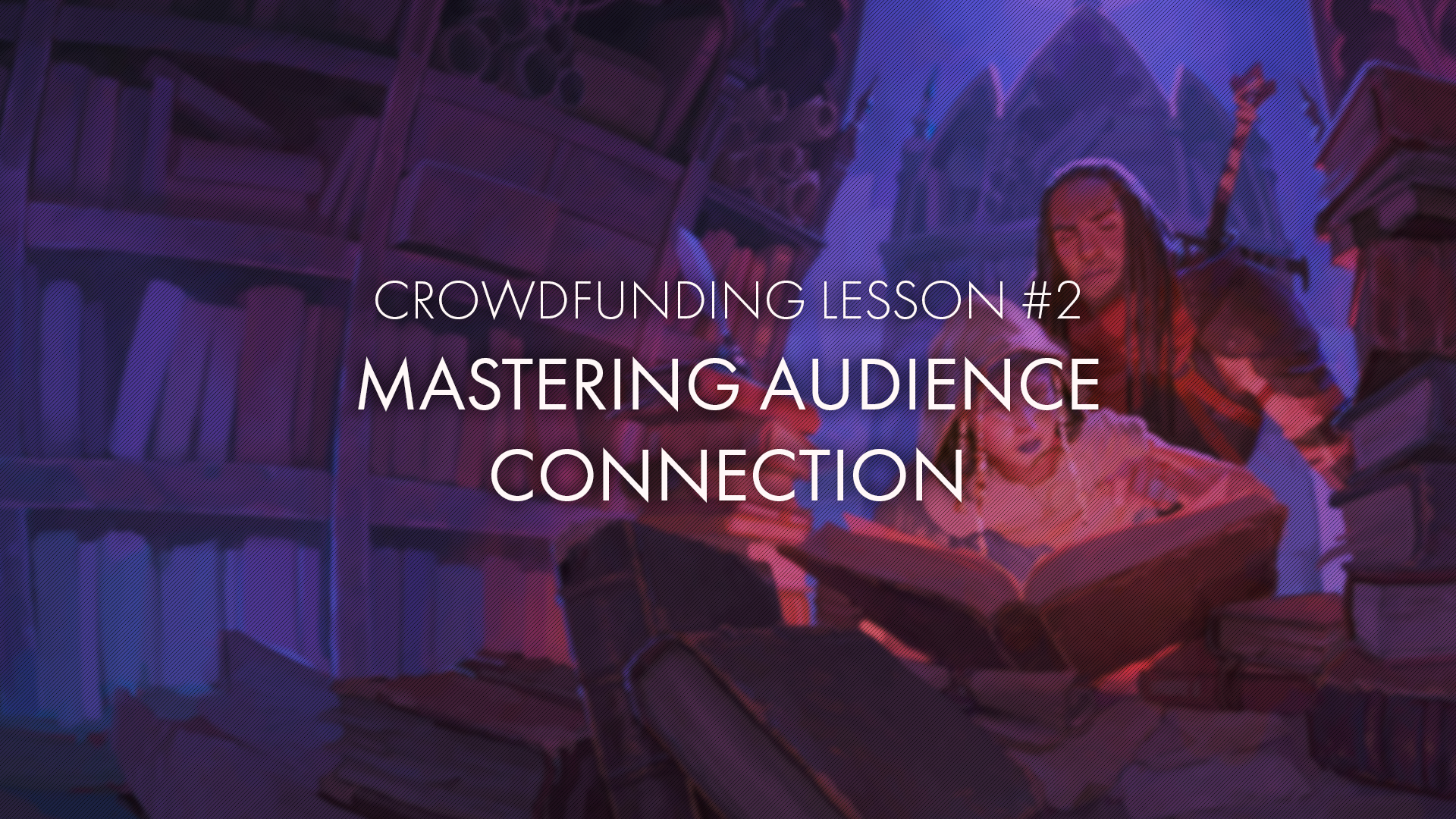Crowdfunding Lesson #2: Mastering Audience Connection
Image: Wizards of the Coast
Crowdfunding, especially in the TTRPG space, is where understanding your audience is not just beneficial to growth, it’s essential. Doing audience research and identifying them isn’t just a box-ticking exercise it’s about forming a meaningful connection with your potential backers, understanding their desires, and tailoring your campaign to meet these needs. With the TTRPG community being larger than ever and more newcomers joining each day, let's dive into the nuances of who your audience is and why they matter.
Who is your Audience?
Identifying your TTRPG audience is a stage that may take some time, it’s where you piece together clues about who will love your game the most. It's about understanding the people behind the dice and character sheets. Imagine sitting down at a gaming table. Who do you see? There are those who love the thrill of battle, strategizing every move. Then there are the storytellers, weaving intricate tales and characters. And don't forget the casual players, in it for fun and camaraderie. Each type of player is a clue to your audience puzzle.
But how do you find these folks? Well, it's a mix of intuition and investigation. Look at existing TTRPG communities. What are they talking about? What games do they love, and why? This gives you a sense of what clicks with them. Online forums, TTRPG groups on social media, and gaming conventions are like your fieldwork sites.
Identifying your audience is an art. It's about feeling the community, understanding the different player types, and then tailoring your campaign to echo their interests and desires. This connection with your audience is what transforms a good TTRPG crowdfunding campaign into a great one.
Research and Strategy
Researching your audience is crucial for crafting a compelling narrative. Understanding them on a personal level uncovers valuable insights that guide decision-making. Dive into research with curiosity and purpose to connect and engage with their hearts and minds.
Surveys and questionnaires are pretty much a given at this stage, by asking the right questions you can get a glimpse into what your audience really wants. Some people love to give their opinion when not asked so why not take them up on the offer and get the information you need. It's not just about their favorite games or characters, but also why they play and what experiences they're seeking.
Social Media is a treasure map of insights, you just need to know where to look. Join forums and pages, see what trends are picking up, note down the pain points the community complains about and those little ‘aha!’ moments can help you shape your campaign. While online, it’s a good idea to learn from people who’ve done this before. Competitor analysis isn’t just copying their campaigns word for word; it’s about taking what they did, dissecting it, and understanding why it worked.
This research phase is your opportunity to really get into the minds of your potential backers. It's about listening, understanding, and then crafting a campaign that feels like it was made just for them.
Engaging with your Audience
Think of this like joining a lively conversation. It’s about being genuine, not just a brand pushing a product. Let’s explore how you can authentically connect with the community.
Firstly, remember, you’re not just a creator; you’re a fellow gamer. Join forums and social media groups not just to promote, but to be part of the discussion. Share your passion for TTRPGs, ask for opinions, and discuss others’ ideas. This builds genuine connections.
Here’s a little action plan to help you get started:
Be a Contributor, Not a Promoter: Share your insights on TTRPG design, storytelling, or mechanics. It's about adding value to the discussion.
Playtesting Invitations: A great way to involve the community and get invaluable feedback.
Free content: By offering free content they can use, you’re giving back to the community that’s helping you. You don’t want a relationship where you gain all the benefits.
Behind-the-Scenes Peeks: Show them the magic behind the curtain. It could be about your design process or a day in the life of a game creator.
As you get comfortable with your community switch these up to things that you know they are more interested in.
However, you must give more than you take. The goal here is to create a game with the community. They're not just potential backers; they're co-creators, advocates, and your most loyal players.
By being genuine and involving them in your process, you're not just sustaining growth for your game, but you're also cultivating a community that will be with you every step of the way.
Learning from Successful Campaigns
There are projects out there that stand out as monumental successes, these can have some great lessons to teach us. Let's look at a few case studies to understand what made them tick and how we can apply these insights to your campaign.
Raised: $2,121,465 USD with 28,918 backers.
A project that stands out is Matt Colville's Strongholds & Followers campaign. It wasn't just about selling a product; it was about creating something with and for the community. Colville's campaign was backed by excellent communication, a clear vision, and a strong existing fan base. For example, Colville frequently used live streams and YouTube updates to communicate progress, setbacks, and to provide sneak peeks. His transparent and consistent communication style helped build trust and excitement, ensuring the community felt valued and involved.
The key takeaway here is the importance of building and nurturing a community around your TTRPG project. Engaging with your audience, involving them in the process, and keeping them informed can turn a campaign into a huge success.
Raised: $1,073,453 USD from 16,269 backers.
Coyote & Crow presented something fresh and unique: an Indigenous Sci-Fi theme. This project didn't just rely on familiar tropes but introduced a new concept that resonated with a very wide audience as evidenced by their backer count. The campaign highlighted its uniqueness through its marketing and storytelling, emphasizing the novelty and cultural richness of its theme. This not only garnered interest but also sparked conversations around diversity and representation in TTRPGs. By tapping into a unique theme, the campaign successfully distinguished itself in a crowded market.
It's a classic example of how bringing something new to the table can capture the imagination of backers. This teaches us the importance of innovation and uniqueness in your TTRPG project.
Raised: $1,316,813 USD with 11,483 backers
7th Sea, a role-playing game, is an interesting case. It had an initial surge of success, but the long-term impact seems mixed. Some backers felt disconnected due to the length of time in receiving materials and realizing the limited use they'd have for them. Even to this day, going on 7 years since the project's end, they are still fulfilling rewards and the actual creator has since left Chaosium which has affected the overall morale of backers even further.
This case underscores the importance of not just relying on initial hype and follower count but also planning for sustainable engagement and product development. Having your backers wait months for updates or not being open and honest can have lasting negative effects. Trust, once dwindling, is hard to recover from.
Final Points
I hope this helps you understand audiences a little better and how important they are. Your campaign is more than a funding goal; it's a journey you take with your audience, where their input and your creativity meet.
Remember, the key to a thriving project is not just knowing your audience but making them a part of your world.




